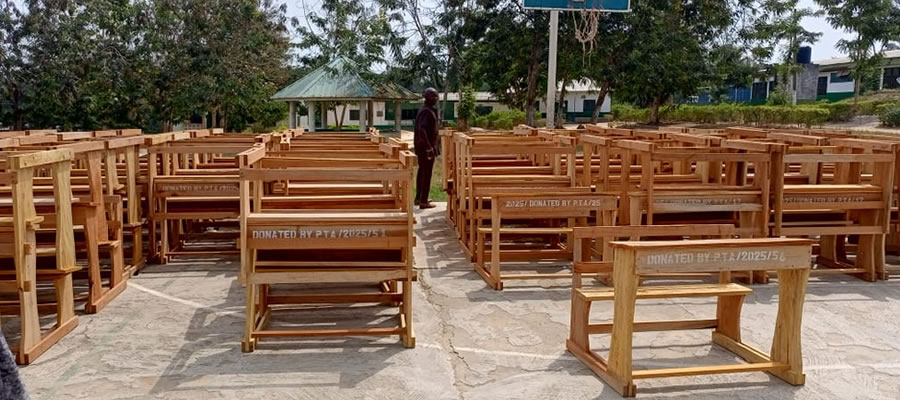

AGRICULTURE
Agriculture constitutes the mainstay of the economy of the people within the Assin South District. Out of a total approximated active population of 104,244 according to the 2010 census, total labour force constitutes 56.99% of the active population i.e. 59,405. Out of this those engaged in agriculture are 39,801 constituting 67%. A total of 14,200 constituting 35.67% of the population that engages in agricultural activities are cocoa farmers.
It must be indicated that although the District does not abound in big rivers and lakes, about 0.8% of the active labour force in agriculture engages in river fishing and aquaculture.
Agriculture is mainly subsistence, producing the staple foods such as plantain, cassava and cocoyam. The traditional cash crops produced are cocoa, citrus and oil palm. Farm holdings are therefore small, ranging from 1-2.5 acres on the average per farmer.
Commercial farming is an emerging trend, where the out growers practice is catching up with most of the farmers in the District. The crops cultivated by commercial farmers include citrus, pineapple, oil palm, and vegetables such as garden eggs, okro and tomatoes.
Mushroom breeding and Grass cutter rearing are some of the new commercial agricultural practices recently introduced to give alternative employment to the youth.
Voacanga species, a medicinal crop, is now being cultivated on a large scale at Nsuta valley farms. The table below shows the output of the major crops produced in 2009.
Table 12: Crop Production Output
Source: Mofa Assin South, 2016
Storage Facility
Farmers are adopting the narrow crib ventilated cribs to store maize, albeit on a small scale at the moment. Cassava is dried and stored as “kokonte”.
Oil palm is prepared and stored as palm oil in drums. However, there are no facilities to preserve citrus, which is produced on large scale in the District. Due to the deficiencies in these storage practices, storage cannot be done on a large scale.
Fortunately, cocoa, the main cash crop of the District has well-organised storage systems. There are large cocoa sheds that offer facilities to cocoa beans.
Irrigation The forms of irrigation systems practised in the District by farmers include the under listed. Irrigation systems and their location.
Table 13: Forms of Irrigation
Source; MOFA 2016
However, the main problem facing these farmers is that their source of water get dried up during the dry season with the exception of those along the banks of the main rivers and streams including; Ochi, Kakum, Kyina, and Woanko which are perennial (i.e. flows throughout the year). There is also the problem of inadequate funds to purchase farming inputs including set of irrigation equipments.
Fishing
According to the 2010 PHC, fishing employs about 0.8% of the labour force that engages in agricultural activities. There are pocket of fish ponds located at Adiembra, Edubiase, Assin Kumasi, Gyahadzi, Nyankumasi-Ahenkro, Nuanua, Nsuta, Nkwantanan etc
The District has great potential for aquaculture in the communities mentioned which could be tapped to increase fish production to increase the protein intake of the citizens.
The following were identified as some of the challenges;
- Inadequate source of fingerlings
- High cost of fingerlings when available
- High inputs cost including feed, harvesting nets etc.
Livestock
Livestock production in the District is mainly on subsistence level. However, few commercial poultry production springs up towards Christmas and Easter festivities. Guinea fowl, rabbit, Grass cutter and snail rearing have also been identified as having great potentials and economic value in the District.
The table below shows the output of the major livestock produced in 2015/ 2016
Table 14: Output of Major Livestock Production
Source: Mofa Assin South 2016
Forest
Forest also forms integral part of the rural economy, providing substantial goods which contributes to all aspects of rural life providing food, forage, fuel, medicine, building materials and household items as well as many intangible benefits such as cultural symbols, ritual artefacts and sacred sited.
Indeed, the District abounds in many forest resources in five (5) big forest reserves.
The increasing demand for fuel wood, charcoal, electric poles, lumber and construction materials have a negative effect on the ecosystem and this requires the promotion of reforestation and afforestation.
According to the 2010 PHC the main source of fuel used for cooking in the District is fire wood (77.1%) and charcoal (12.9%). This has led to environmental problems such as deforestation, land degradation and soil erosion.
To help address the above, the forestry department has helped individuals and organizations within the District to establish their own woodlot for fuel wood, electricity and telephone poles.
Challenges
The creation of the forest and game reserves has deprived many communities on the fringes of the reserves of their livelihood.
In addition, their farms are ravaged by wild animals such as elephants, boars and monkeys. The above therefore calls for the establishment of an alternative means of livelihood.
Technical Support
Technical support services are provided to farmers by the MoFA – Department of Agriculture staff in the District. The MoFA DADU has staff strength of 28 comprising of One (1) District Director, Seven (7) District Development officers (DDOs), Two (2) Veterinary officers, and Thirteen (13) Agric Extension Agents (AEA s). With this staff strength, the Agricultural Extension Agents – Farmer ratio is 1: 2590. This is quite low when compared to the standard ration of 1: 1200. This put a lot of strain on the officers.
However, it is important to note that MoFA-DADU has inadequate office and residential accommodation as well as logistics problems
Date Created : 10/10/2024 3:09:31 AM











 facebook
facebook
 twitter
twitter
 Youtube
Youtube
 +233 593 831 280
+233 593 831 280 0800 430 430
0800 430 430 GPS: GE-231-4383
GPS: GE-231-4383 info@ghanadistricts.com
info@ghanadistricts.com Box GP1044, Accra, Ghana
Box GP1044, Accra, Ghana